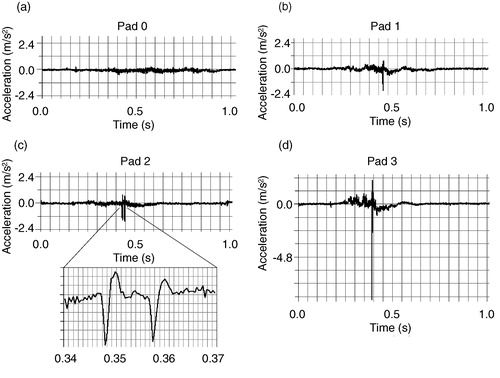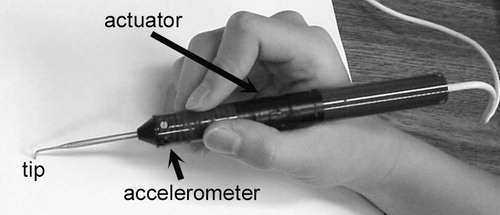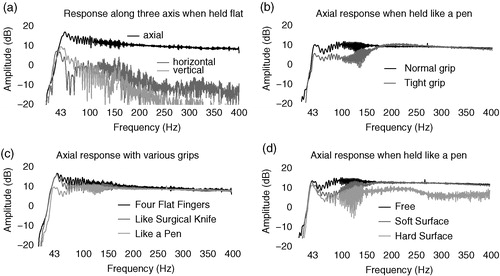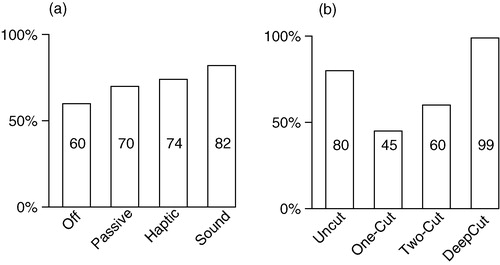Figures & data
Figure 2. Main structural components of the probe. The digital signal processing hardware and software is not shown here.

Figure 3. (a) The texture amplitude was modulated by varying the pressure of the probe on the surface. (b) A small crack produced a single transient. (c) A double crack produced a double transient. (d) A large transient given by a deep cut.

Table I. Pooled results in percentile form for the four conditions and for the different cuts.


